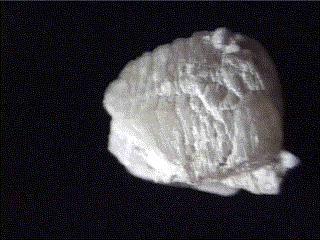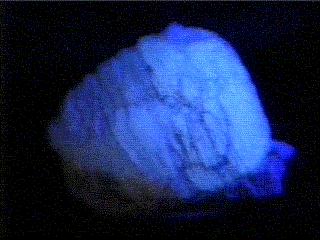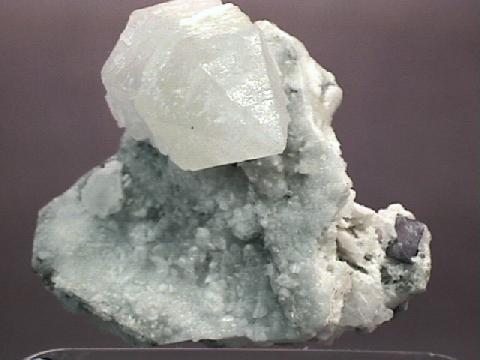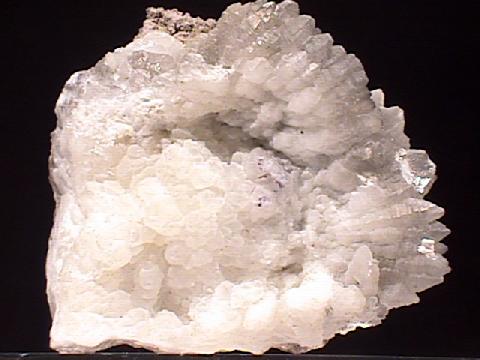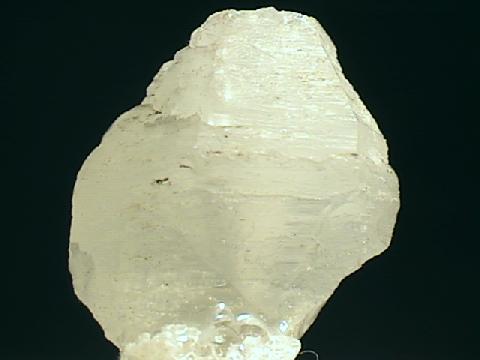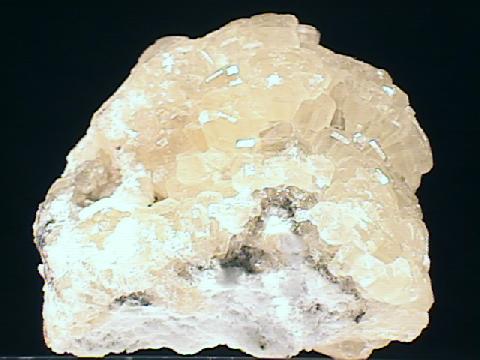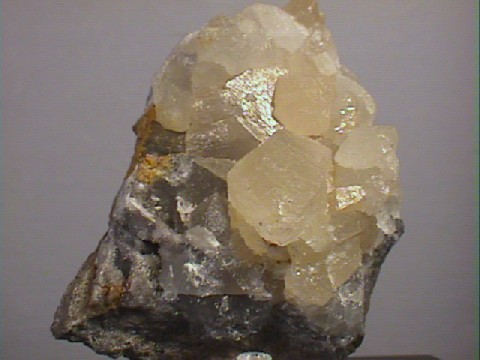 The Mineral WITHERITE
The Mineral WITHERITE
 (under longwave UV light)
(under longwave UV light)
- Chemistry: BaCO3, Barium Carbonate
- Class: Carbonates
- Group: Aragonite
- Uses: a minor ore of barium and as mineral specimens.
Specimens
Twinning is the result of an error during the growth of the crystal. It occurs when the atomic layer stacking, ABCABCABCABC etc, makes a mistake and a C layer instead of a B layer is place next to an A layer. The result is an ABCABCACBACBACBA stacking. Where the mistake occurs, a mirror plane is produced. If this occurs another time, forming three twins, that are joined in a circle, then a trilling is created. The symmetry of the crystal will appear hexagonal but is still orthorhombic. These crystals can be thought of as a "triple siamese twin" where one crystal takes up one third (or 120 degrees) of the hexagon. Witherite's twins are typically capped with a six sided pyramid and often are dipyramidal.
Witherite is an interesting and valuable collection specimen that anyone, especially a collector of twinned minerals, would love to own.
PHYSICAL CHARACTERISTICS:
- Color is white, colorless, gray, brown, yellowish or greenish.
- Luster is vitreous to dull.
- Transparency crystals are transparent to usually translucent.
- Crystal System is orthorhombic; 2/m 2/m 2/m
- Crystal Habits include a pseudo-hexagonal trilling twin which forms a six-sided prism, usually with a slanted, tapering pyramid. Often they are dipyramidal without any prism faces. The faces are usually striated perpendicularly. Also there are botryoidal, massive and fibrous forms.
- Hardness is 3 - 3.5.
- Specific Gravity is 4.3+ (heavy for transparent minerals)
- Cleavage is distinct in one direction, but not usually seen due to twinning.
- Fracture is uneven.
- Streak is white.
- Associated Minerals include fluorite, celestite, galena, barite, calcite and aragonite.
- Other Characteristics: effervesces in dilute HCl solutions, also fluoresces light blue under both long and short-wave UV light and is phosphorescent under short-wave UV light.
- Notable Occurrences include Cave-in-rock, Rosiclare, Illinois, USA; Alston Moor, Cumberland and Durham, England; Thunder Bay area, Ontario, Canada and Germany.
- Best Field Indicators are twinned habits, reaction to acid, fluorescence and phosphorescent under short-wave UV light and density.

